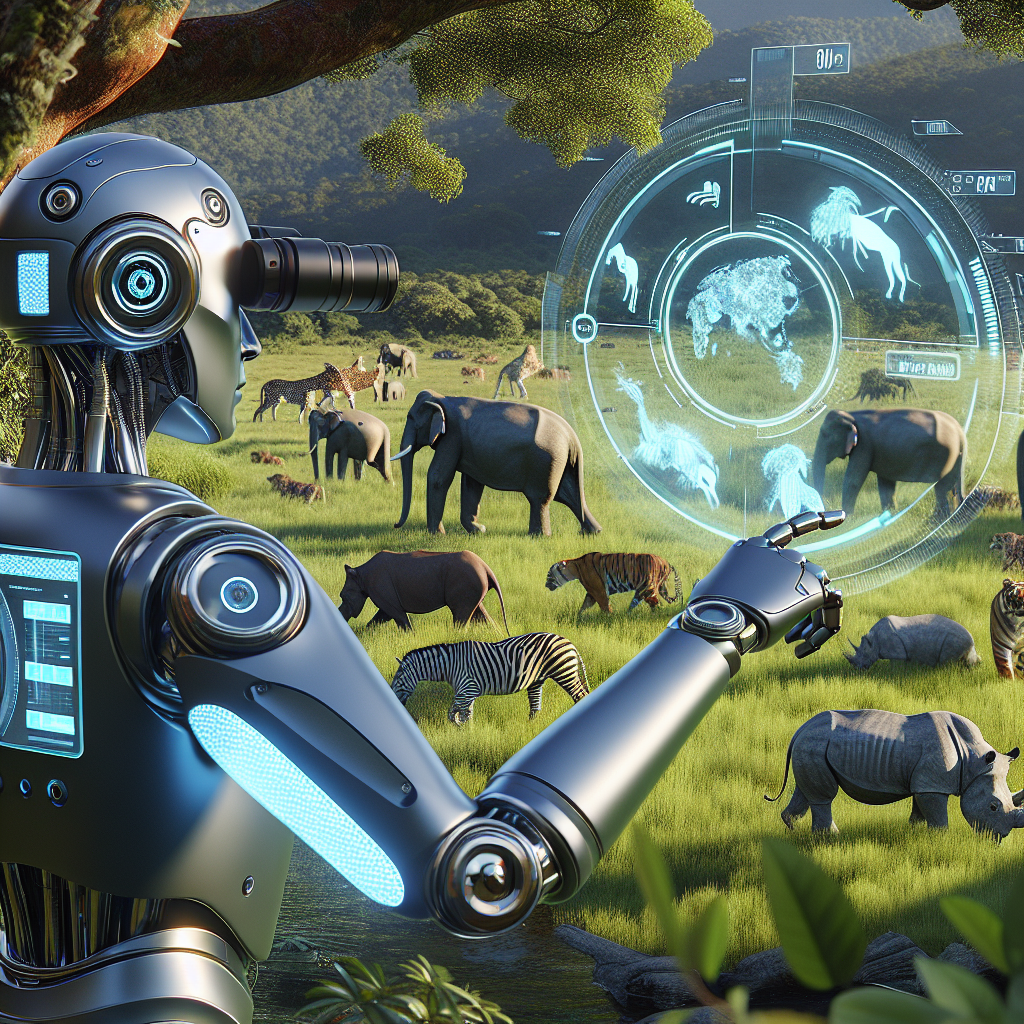Illegal wildlife trade is a global crisis that is threatening the survival of countless species and wreaking havoc on ecosystems around the world. From elephant ivory and rhino horn to pangolins and tigers, the trade in illegal wildlife products is a multi-billion dollar industry that is driven by greed and fueled by demand for exotic animals and their body parts.
In recent years, there has been a growing recognition of the need to tackle this issue head-on and to use all available tools and technologies to combat illegal wildlife trade. One such tool that is increasingly being used in the fight against wildlife crime is artificial intelligence (AI).
AI is a powerful technology that has the potential to revolutionize the way we monitor and combat illegal wildlife trade. By using AI-powered tools and algorithms, conservationists and law enforcement agencies can analyze vast amounts of data, identify patterns and trends, and track the movements of wildlife products in real-time. This can help to disrupt criminal networks, catch poachers and traffickers, and ultimately reduce the demand for illegal wildlife products.
One of the key ways in which AI is being used to monitor and combat illegal wildlife trade is through the use of image recognition technology. Poachers and traffickers often use social media and other online platforms to advertise and sell their illegal goods. By using AI-powered image recognition tools, conservationists can scan these platforms for images of endangered species or wildlife products and quickly identify and locate the people involved in the trade. This can help authorities to build cases against wildlife criminals and shut down their operations.
Another way in which AI is being used to combat illegal wildlife trade is through the analysis of satellite imagery. By using AI algorithms to analyze satellite data, conservationists can track the movements of poachers and traffickers in real-time and identify hotspots where illegal activities are taking place. This can help law enforcement agencies to deploy resources more effectively and target their efforts where they are most needed.
AI can also be used to analyze data from wildlife tracking devices, such as GPS collars or camera traps. By using AI algorithms to analyze this data, conservationists can track the movements of endangered species, monitor their populations, and identify threats to their survival. This can help conservationists to better protect these species and ensure their long-term survival in the wild.
In addition to monitoring and combatting illegal wildlife trade, AI can also be used to educate the public and raise awareness about the issue. By using AI-powered tools to create interactive maps, visualizations, and other educational materials, conservationists can help people to understand the impact of illegal wildlife trade and the importance of protecting endangered species. This can help to build public support for conservation efforts and encourage people to take action to protect wildlife.
Despite the potential of AI to revolutionize the fight against illegal wildlife trade, there are some challenges and limitations to consider. One of the key challenges is the need for accurate and reliable data. AI algorithms rely on vast amounts of data to function effectively, and if the data is inaccurate or incomplete, the results can be unreliable. This is especially true in the case of illegal wildlife trade, where data can be scarce and difficult to obtain.
Another challenge is the need for collaboration and cooperation between different stakeholders. The fight against illegal wildlife trade requires a coordinated effort from governments, law enforcement agencies, conservation organizations, and the public. AI can help to facilitate this collaboration by providing a common platform for sharing data and information, but it is essential that all parties work together towards a common goal.
In conclusion, AI has the potential to revolutionize the way we monitor and combat illegal wildlife trade. By using AI-powered tools and algorithms, conservationists and law enforcement agencies can analyze vast amounts of data, identify patterns and trends, and track the movements of wildlife products in real-time. This can help to disrupt criminal networks, catch poachers and traffickers, and ultimately reduce the demand for illegal wildlife products. However, there are challenges and limitations to consider, and it is essential that all stakeholders work together to harness the full potential of AI in the fight against illegal wildlife trade.
FAQs:
Q: Can AI really help to combat illegal wildlife trade?
A: Yes, AI has the potential to revolutionize the fight against illegal wildlife trade. By using AI-powered tools and algorithms, conservationists and law enforcement agencies can analyze vast amounts of data, identify patterns and trends, and track the movements of wildlife products in real-time.
Q: How does AI help to monitor illegal wildlife trade?
A: AI can be used to monitor illegal wildlife trade in a variety of ways, including image recognition technology, satellite imagery analysis, and wildlife tracking data analysis. These tools can help to identify and locate poachers and traffickers, track the movements of endangered species, and disrupt criminal networks involved in the trade.
Q: What are the challenges of using AI to combat illegal wildlife trade?
A: One of the key challenges is the need for accurate and reliable data. AI algorithms rely on vast amounts of data to function effectively, and if the data is inaccurate or incomplete, the results can be unreliable. Another challenge is the need for collaboration and cooperation between different stakeholders to ensure the success of conservation efforts.
Q: How can I get involved in the fight against illegal wildlife trade?
A: There are many ways to get involved in the fight against illegal wildlife trade, including supporting conservation organizations, raising awareness about the issue, and reporting any suspicious activities to the authorities. By working together, we can all make a difference in protecting endangered species and preserving our natural world.

